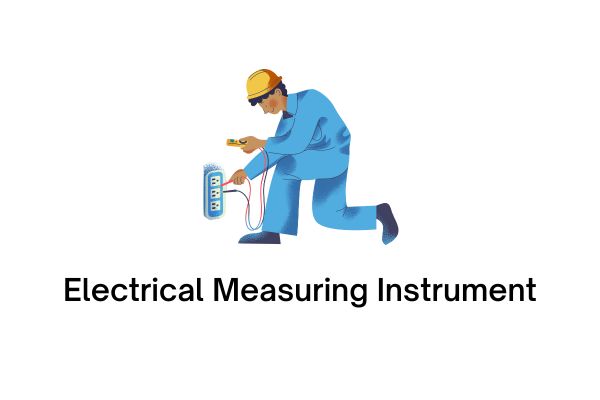Now there are various kinds of electrical measuring instruments, which are divided into static electric currents and dynamic electricity.
If interpreted, static electric current is a steady current where electrons will not move. Meanwhile, in dynamic electricity, electrons are always moving.
Apart from that, dynamic electric current is divided into two parts, namely DC electric current with unidirectional displacement.
As well as AC electric current where the transfer of electrons occurs back and forth. To understand more about this tool for measuring electricity, see the following explanations:
Daftar Isi
Understanding Electrical Measuring Instrument
Electrical measuring instruments are equipment designed to determine the magnitude of an electric current.
As well as knowing how much resistance and potential difference there is in a current.
Now measuring instruments for measuring the amount of electric current are divided into two, namely digital and analog. If the user uses an analog measuring instrument, the user must be able to read it alone.
Because later the size will be indicated by the presence of a needle.
Meanwhile, for measuring electric current with digital tools, it will be presented automatically.
The function of Measuring Electrical Quantities
Electrical measuring instruments also have various functions so that they can determine several components in an electric current.
Not only do you know the magnitude of a current but also the frequency and other components.
Therefore, consider the various functions for measuring electric current below:
1. Know the amount of electric current
The first function is to find out how much electric current there is in current units.
Or to find out how much electric charge flows when crossing a surface by calculating the speed for 1 second while the unit of electric current is symbolized by the ampere.
2. Know the size of electrical resistance
The next step is to find out the amount of electrical resistance or electrical resistance.
This resistance, also known as resistance, is something that can reduce the electric current flowing from the conductor.
Meanwhile, the amount of electrical resistance is usually measured in Ohm units.
3. Measuring Electrical Power
Don’t forget that measuring electric current also aims to find out how much electric power there is.
If interpreted, this is the ability of electrical equipment to carry out work related to changes in load performance.
As well as knowing the work of electricity in a unit of time.
Apart from that, this power also functions as a voltage quantity.
And current is the absorption of energy produced in a circuit.
This is one of the important functions of measuring with the help of existing measuring instruments.
4. Know the magnitude of strong light
Using electrical measuring instruments you can also calculate how much light is produced.
Or more often referred to as strong light and also the intensity of light from an electrical circuit. Usually this is symbolized by a candela or cd.
5. Measuring Voltage
With an electrical measuring instrument you can also find out the amount of electric voltage.
This is also more commonly known as the potential difference acting on an element or terminal component. All of these things will later function as an electric charge driver.
6. Know the Frequency
The final function of using an electrical measuring instrument is to be able to find out the frequency or number of electric waves.
To calculate the number of waves produced, use time units per second. Usually this frequency unit also uses hertz or Hz.
Types of Electrical Measuring Instruments
Next, we will discuss the types of electrical measuring instruments available.
Apart from that, the various types of measuring instruments currently available are also divided based on their function.
Moreover, the various measurement tools available have different functions, see the following explanation:
1. Ammeter
The first electrical measuring instrument was called an ammeter. This is a tool that functions to determine the amount of electric current.
Apart from that, these measuring instruments are also divided into two types, namely AC and DC ammeters.
In its use, it is installed in series or rows. Equivalent to cutting the conductor.
This aims to ensure that electric current can flow through the ammeter.
2. Voltmeter
The following is included in the next type of electrical measuring instrument called a voltmeter.
This tool functions to find out the amount of electric voltage in two electrical circuits.
When carrying out measurements there is also a maximum limit for voltage.
So if you measure beyond the limit, it will definitely damage the tool.
Meanwhile, the use of this voltmeter is arranged in parallel. Exactly on the object that will later be measured in the series.
3. Ohm Meter
Next there is also a tool called an ohmmeter. This tool functions to determine the electrical resistance in a closed circuit.
The measuring instrument uses a galvanometer.
And functions in measuring the amount of electric current.
This tool is also equipped with a battery. So it can produce internal flow during measurement.
4. Watt Meters
Next there is a tool called a wattmeter. This tool was deliberately made to measure electrical power.
Apart from that, this tool can also be used directly in one direction.
And also alternating or in other words for measuring AC and DC currents.
By having two coils in the tool, you can find out the magnitude of the coil voltage. As well as measuring how much current the coil has.
5. Multimeter
The last type of electrical measuring instrument is called a multimeter.
This tool has the function of measuring electrical resistance, voltage and current.
And this tool is more widely used by some groups because it is considered more practical.
Moreover, the measurement results are faster. Before using it, users must first determine what needs they want to know.
So that measurements are more accurate by using the help of this tool considering its double function.
These are various explanations regarding the electrical measuring instruments currently available.
By reading this explanation, users will definitely understand more about the types of electrical measuring instruments.
